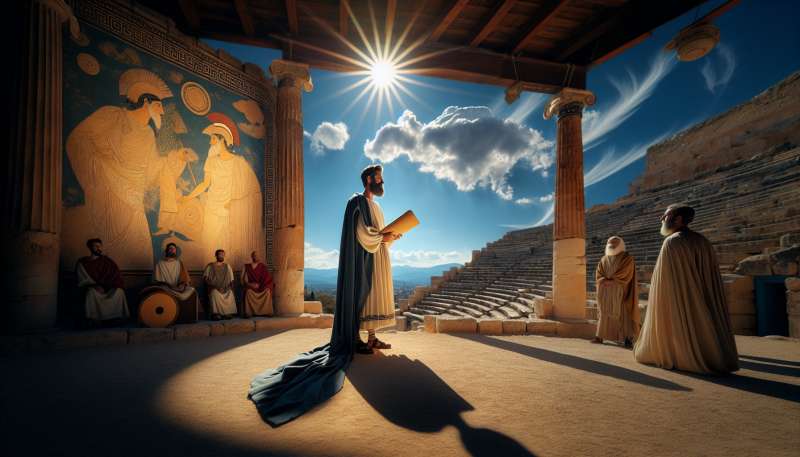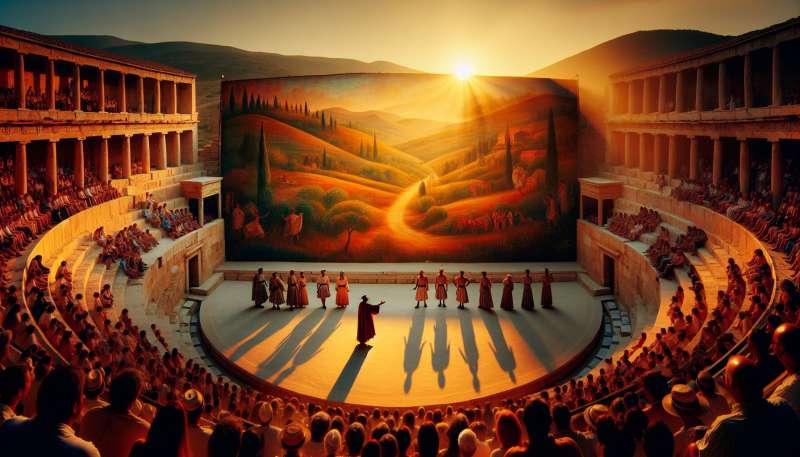
Sophocles: Life and Works
Born c. 496 BC, Sophocles was one of the three ancient Greek tragedians whose work has survived. His most notable contributions include introducing painted scenery and a third actor, significantly changing the dynamics of Greek theatre.
Sophocles' Play Structure
Sophocles pioneered the three-actor structure, reducing the chorus's role and focusing on character development and conflict. He emphasized three-part plot construction: complication, climax, and resolution, enhancing the dramatic arc.
Innovation in Scenery
Sophocles is credited with adding painted scenery to the back of the stage, known as skenographia, transforming the theatrical experience. This innovation allowed for greater illusion of depth and varied visual storytelling.
The Theban Plays
Sophocles' most famous works are the Theban plays: 'Oedipus Rex', 'Oedipus at Colonus', and 'Antigone'. These plays explore themes of fate, free will, and divine retribution, and remain significant in world literature.
Sophoclean Irony
Sophocles introduced dramatic irony, where the audience knows more than the characters. This is masterfully employed in 'Oedipus Rex' with the audience aware of Oedipus's true parentage before he is.
Competitions and Legacy
Sophocles won 24 out of the 30 dramatic competitions he participated in, more than any other playwright of his time. His work influenced not only theatre but also philosophical and psychoanalytical theories later on.
Unfound Sophoclean Plays
Of the 120 plays Sophocles is believed to have written, only 7 complete plays survive today. Fragments of lost plays occasionally surface, providing insight into his vast, largely undiscovered repertoire.
Who introduced three-actor structure?
Aeschylus, the predecessor
Sophocles, the innovator
Euripides, another tragedian
Company